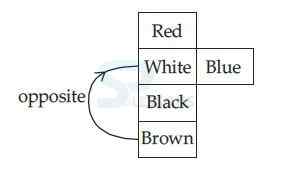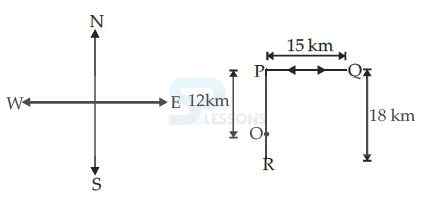 Introduction
Introduction
What is the definition of General Mental Ability?
General mental ability (GMA) is a term used to describe the level at which an individual learns, understands instructions, and solves problems. Tests of general mental ability include scales that measure specific constructs such as verbal, mechanical, numerical, social, and spatial ability. The overall score is considered the most important factor, explaining more variation in individual performance than specific abilities.
The article UPSC CSE General Mental Ability provides questions with answers useful to the candidates preparing for General Mental Ability module for several competetive exams.
 Quiz
Quiz
1. A person has 4 coins each of different denomination. What is the number of different sums of money the person can form (using one or more coins at a time)?
- A. 16
B. 15
C. 12
D. 11
- A. 6
B. 12
C. 17
D. 22
- A. Red
B. Black
C. White
D. Blue
- A. 36
B. 30
C. 25
D. 20
- A. 10 km
B. 20 km
C. 30 km
D. 40 km
1. A person travels 12 km due North, then 15 km due East, after that 15 km due West and then 15 km due South. How far is he from the starting points?
- A. 6 km
B. 12 km
C. 33 km
D. 60 km
- A. 16
B. 15
C. 12
D. 8
- A. MFEDJJOE
B. EOJDEJFM
C. MFEJDJOE
D. EOJDJEFM
- A. X
B. W
C. I
D. H
- A. Landslides
B. Strains
C. Resistances
D. Volcanoes
1. Statement:
Children catch infections when they eat roadside food.
Courses of Action:
I. Parents should not allow their children to eat roadside food but rather try to prepare that type of food at home.
II. The children should be taught about what is healthy food and that the type of food prepared on the road side is not healthy.
- A. if only I follow.
B. if only II follows.
C. if either I or II follows.
D. if neither I nor II follows.
E. if both I and II follow.
- A. If only I follow.
B. If only II follows.
C. If either I or II follows.
D. If neither I nor II follows.
E. If both I and II follow.
- A. If only I follow.
B. If only II follows.
C. If either I or II follows.
D. If neither I nor II follows.
E. If both I and II follow.
- A. If only I follow.
B. If only II follows.
C. If either I or II follows.
D. If neither I nor II follows.
E. If both I and II follow.
- A. If only I follow.
B. If only II follows.
C. If either I or II follows.
D. If neither I nor II follows.
E. If both I and II follow.
Other Articles
 Study Guide
Study Guide
 Exams
Exams
| Competitive Exams - Entrance Exams | |||
|---|---|---|---|
| Category | Notification | ||
| UG | NSTSE 2020 | RIMC Admission 2020 | WBJEE EVETS 2019 |
| Diploma | HPBOSE D.El.Ed CET 2019 | Goa Diploma Admissions 2019 | |
PG |
GATE 2020 |
ATMA 2019 |
XAT 2020 |
| Click Here For – All India Entrance Exam Notifications | |||
 Daily CA
Daily CA
 Job-Alerts
Job-Alerts
 SP Quiz
SP Quiz
| Competitive Exams - Practice Sets | |
|---|---|
| Category | Quiz |
| Reasoning Ability | Seating Arrangement |
| Quantitative Aptitude | Permutation and Combination |
| Data Interpretation | |
 GK
GK
| General Knowledge for Competitive Examinations | |
|---|---|
| Topic | Name of the Article |
| GK - World | World Food Festivals |
| Highest Civilian Awards | |
| GK - India | Indian Men Personalities |
| Indian River Projects | |
| GK - Abbreviations | Indian Railways Acronyms |
| Sports Abbreviations | |
| GK - Banking & Insurance | Insurance Ombudsman |
| Negotiable Instruments | |
| GK - Science & Technology | Physical Quantities and Units |
| Indian Research Institutes | |
| Famous Websites | |





